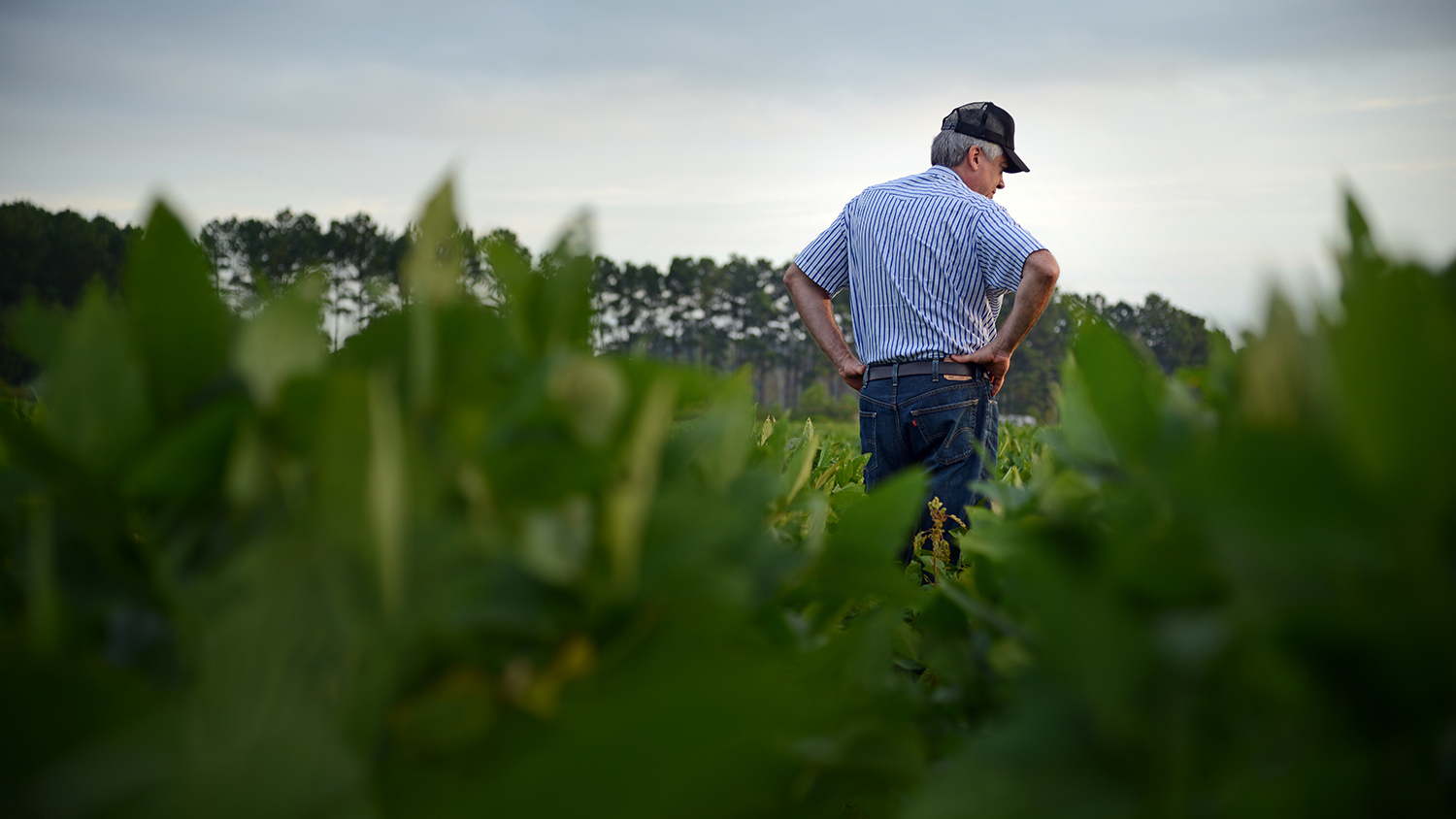New Southeast Outlook and Situation

By Dr. Blake Brown
August 26, 2019
Corn, soybeans and hogs make up a large share of agricultural income in the Midwest. Agriculture in the southeast is much more complex. Our farm sector is extremely diverse with only California matching the size and diversity of southeastern agriculture. Georgia ranks first, North Carolina second, and Arkansas third in national poultry production. Georgia ranks first in peanut and pecan production while North Carolina ranks first in tobacco and sweet potato production. North Carolina ranks second in hog production and Christmas trees while Georgia ranks second in cotton production. When it comes to fruits and vegetables Florida is surpassed only by California with plenty of fruits and vegetables produced throughout the rest of the southeast. The 10 states often considered as southeastern (AL, AR, FL, GA, LA, MS, NC, SC, TN,VA) made up 21 percent of 2017 U.S. net farm income. North Carolina (the Sunbelt Ag Expo spotlight state) leads the southeast in net farm income at over $4 billion in 2018. The U.S. farm economy is experiencing a deep economic downturn. While this is also generally true for southeastern agriculture, the outlook varies within the southeast depending on which of the diverse array of crops and livestock is most concentrated in a particular region.
Poultry and Livestock
Poultry production, particularly boilers, has made a strong recovery since 2012. With continued growth in demand the industry has followed with considerable expansion in the southeast. Six new poultry processing plants are expected to be up and running by 2020. Lower feed prices have also contributed to increased profitability. Hogs have made a recovery in recent years after overcoming outbreaks of porcine epidemic diarrhea (PED) and, as with poultry, benefiting from lower feed prices. However, expansion in pork production has occurred largely outside the southeast. International trade developments could have had severe impacts on poultry and hogs had it not been for the outbreak of African Swine Fever (ASF) in Asia, particularly in China. China consumes 50 percent of the world’s pork producing nearly all of it domestically. ASF has resulted in a large reduction in China’s swine herd which has increased Chinese demand for imports of pork and poultry. Unfortunately retaliatory tariffs have resulted in a 62.5 percent tariff on Chinese imports of U.S. pork and imports of U.S. poultry are banned due to Avian Influenza. Even so this has resulted in increased global demand for pork and poultry which indirectly raises demand for U.S. pork and poultry. Cattle prices continue to be depressed following a large expansion in the cow herd. With the expansion in the cow herd over prices were expected to begin some recovery. Unfortunately the Tyson beef processing plant fire has dampened prices, at least in the short run.
Crops
The southeast produces a lot of corn and soybeans which face the same dreary outlook as the rest of the U.S. While wet planting conditions in the mid-west negatively affected supply (although not as much as originally expected), ASF in China is negatively affecting demand for corn and soybeans globally. Retaliatory tariffs by China further dampens export demand, particularly for soybeans. Retaliatory tariffs by China have also negatively impacted prices for cotton as has a larger 2019 cotton crop. Peanut acreage is down but prices remain below $425 per ton for runners and most Virginia types. The outlook for tobacco is dismal with the Chinese stopping all purchases of U.S. tobacco. This has resulted in depressed prices and the lowest production in over 75 years. Southeast fruit and vegetable producers had hoped for some relief from competition from Mexico in the U.S.-Mexico-Canada trade deal but the conditions under NAFTA were largely maintained. Even so the southeast is well positioned to meet east coast demand for fruit and vegetables with demand for some specialty crops like sweet potatoes and blue berries continuing to grow. Lack of affordable labor remains a top issue for fruit and vegetable producers as well as tobacco producers. Prospects are not bright for Congress providing a better labor package for agriculture given that it is tied closely to immigration reform.
Government Programs
Payments under the 2018 Farm Bill Commodity Programs are critically important to cotton and peanut producers, with substantial Price Loss Coverage payments coming for the 2018 crop in October and payments expected for the 2019 crop in 2020. Trade assistance from USDA to mitigate the impacts of retaliatory tariffs will also be important. The Market Facilitation Payments will be flat rates based on 2018 acres of qualifying crops and the county of the applying farm. Counties more heavily impacted by trade retaliation have larger payment rates (such as those with more soybeans and cotton). The Food Purchase and Distribution Program for agriculture products impacted by retaliatory tariffs will purchase $1.4 billion of products including vegetables, fruits, peanut butter, pork, poultry, and beef.
Take Aways
The southeast remains a competitive region for fruit and vegetable production with some specialty crops like sweet potatoes experiencing continued strong growth in demand. Despite retaliatory tariffs and import bans by China, the outlook for the pork and poultry sectors remain strong. Prices for cotton and peanuts remain depressed with farm bill program payments critical to the vitality of producers. Tobacco producers face the most dismal outlook with China stopping all purchases of U.S. tobacco and no assistance from USDA for the damage caused by China’s trade retaliation. In the southeast the large majority of farmers are diversified, often across major sectors such as poultry and crops. Few farmers produce only one type of crop or livestock. This diversity improves the resilience of the southeastern agriculture sector.


